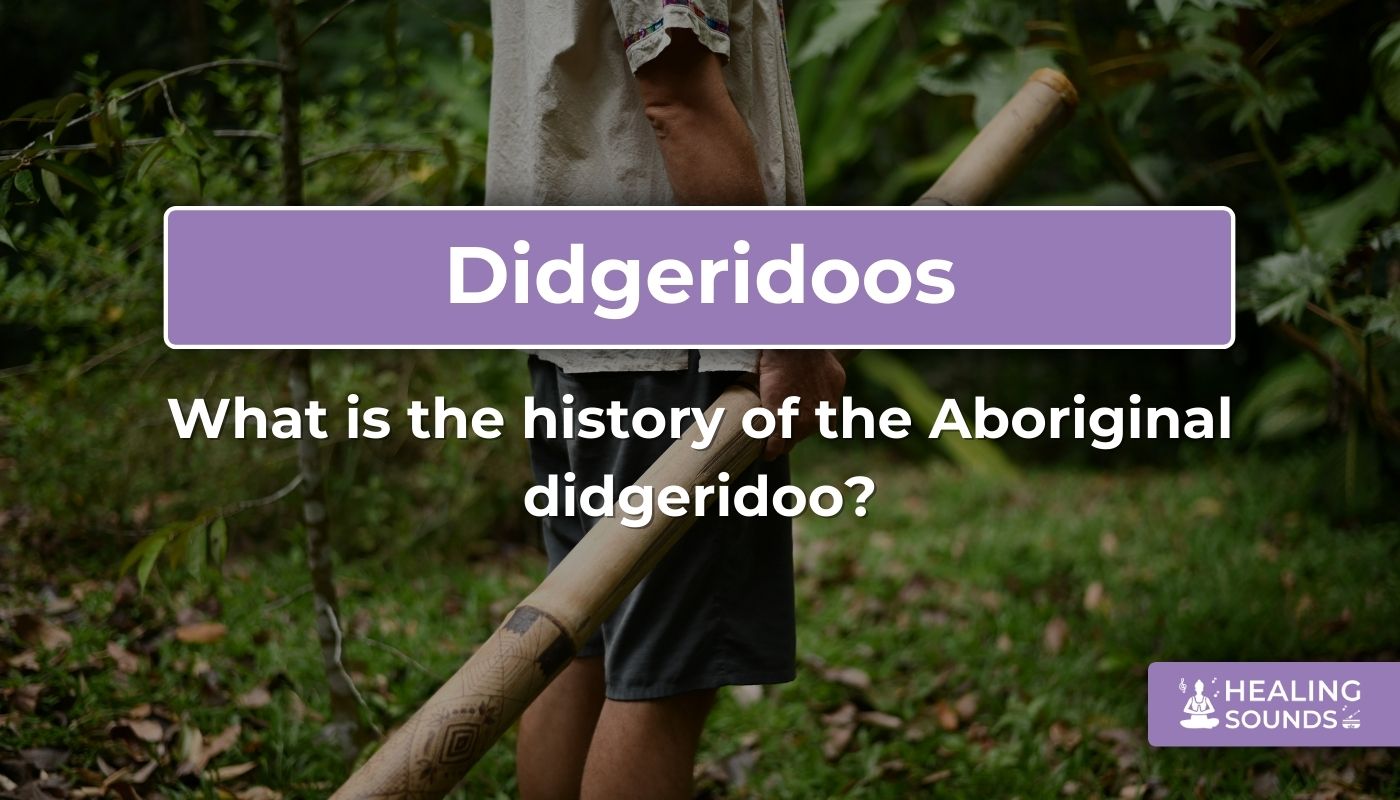The Aboriginal didgeridoo stands as one of the world's oldest and most evocative wind instruments. Its deep, resonant drone carries echoes of millennia of culture, ceremony, and connection to the land for the Indigenous peoples of Australia. More than merely a musical tool, it's a spiritual artifact and a symbol of enduring heritage. If you're fascinated by unique musical traditions, cultural history, or the power of sound, understanding the history of the Aboriginal didgeridoo instrument offers profound insights. Join us as we explore the origins, cultural significance, and enduring legacy of this remarkable instrument.
Unearthing the Ancient Roots: The Didgeridoo Instrument Origin
Pinpointing the precise birth of the didgeridoo is challenging, but it's widely accepted as one of the oldest wind instruments on Earth. Archaeological findings and rock art suggest its presence in Northern Australia for at least 1,500 years, though many believe its didgeridoo instrument origin stretches much further back into Dreamtime stories.
Traditionally, the creation of a didgeridoo is a beautiful collaboration between nature and human artistry. It begins with specific species of eucalyptus trees, typically found in northern Australia. Termites naturally hollow out the branches or trunks of these trees. Indigenous artisans then carefully select these termite-hollowed logs, expertly shaping, cleaning, and refining them into the resonant instruments we recognize today. This organic process intrinsically links the Aboriginal didgeridoo to the Australian landscape.
Why is the Didgeridoo Sacred? Cultural Significance and Traditional Roles
The didgeridoo holds deep spiritual and cultural importance within many Aboriginal communities. Its sound is integral to ceremonies, accompanying songs and dances that relay vital stories about creation, ancestral beings, lore, and the intricate relationship with the environment. The instrument acts as a conduit, connecting the players and listeners to the spiritual realm and the rhythms of the land. This profound connection is a key reason why the didgeridoo is sacred.
Traditionally, the roles and responsibilities associated with the didgeridoo vary significantly between different Aboriginal language groups and communities. In some traditions, playing the didgeridoo is primarily a male role, reserved for specific ceremonial contexts. It's crucial for those outside the culture to approach the didgeridoo with respect, acknowledging these diverse protocols. The question "What happens if a woman plays the didgeridoo?" doesn't have a single answer across all of Aboriginal Australia; respecting specific community guidance is paramount.
Beyond formal ceremonies, the powerful drone of the didgeridoo could historically serve practical purposes, such as long-distance communication across the vast Australian landscape.
Did You Know? An Interesting Fact About the Didgeridoo
The name "didgeridoo" itself is not an Aboriginal term. It's believed to be an onomatopoeic word coined by early English-speaking settlers, attempting to mimic the complex sounds the instrument produces. Indigenous communities have various names for the instrument in their own languages, such as Yidaki in the Yolngu Matha language of Northeast Arnhem Land.
The Sound and Craftsmanship of a Traditional Aboriginal Didgeridoo
The unique sound of the Aboriginal musical instrument didgeridoo is a result of its physical form and the skill of the player. Traditionally made from termite-hollowed eucalyptus, the length, diameter, and internal shape of the bore heavily influence the instrument's fundamental pitch and resonant overtones (or 'toots'). Longer instruments generally produce lower keys, while shorter ones yield higher pitches.
Traditional craftsmanship involves smoothing the exterior, sometimes sealing the wood, and often applying beeswax to the mouthpiece for player comfort and a better air seal. Many traditional didgeridoos are also adorned with intricate paintings using ochre or natural pigments. These designs are not merely decorative; they often carry specific meanings, representing clan affiliations, Dreamtime stories, or features of the local environment, adding another layer to the traditional didgeridoo history.
Playing the Didgeridoo: Techniques and Modern Exploration
Playing the didgeridoo requires a specific technique known as circular breathing. This allows the player to maintain a continuous drone by inhaling through the nose while simultaneously expelling air stored in the cheeks through the lips. Mastering this technique takes practice but is fundamental to the instrument's characteristic sound. How is the didgeridoo played? It involves vibrating the lips into the mouthpiece while employing circular breathing to sustain the note, often adding vocalizations and rhythmic patterns.
Learning to play offers potential benefits beyond musical expression. The practice of circular breathing can be an excellent respiratory exercise, potentially strengthening lung capacity. Furthermore, the deep vibrations produced by the didgeridoo are increasingly utilized in sound therapy sessions worldwide for relaxation and stress reduction.

Didgeridoo Australian Teak Wood Instrument
$149.90 $209.90
Ideal for beginners exploring the history of the Aboriginal didgeridoo instrument, this teak wood didgeridoo offers an accessible way to learn circular breathing and connect with ancient sounds.
Explore the Teak DidgeridooThe Didgeridoo Today: Global Reach and Cultural Respect
From its roots in Northern Australia, the didgeridoo has journeyed across the globe. Its captivating sound features in world music, meditation practices, and sound healing therapies. While modern didgeridoos are sometimes crafted from non-traditional materials like bamboo, agave, or even PVC for accessibility, instruments made from traditional Australian timbers are often prized for their authentic tonal qualities derived from the didgeridoo instrument origin.
This global popularity brings with it a responsibility. It's essential to engage with the didgeridoo respectfully, acknowledging its deep cultural origins and significance to Aboriginal peoples. Supporting Indigenous artists and communities, and learning about the cultural context, are vital aspects of appreciating this instrument ethically. For more information on Aboriginal and Torres Strait Islander cultures, consider resources like the Australian Institute of Aboriginal and Torres Strait Islander Studies (AIATSIS).
Discover Your Sound: Authentic Didgeridoos

Didgeridoo Australian Instrument for Sound Healing (Eucalyptus)
$159.90
$219.90
Crafted from resonant eucalyptus, this traditional style Aboriginal didgeridoo is perfect for sound healing, meditation, and exploring deep tones. Learn more ➔

Portable Spiral Didgeridoo - Australian Instrument
$149.90
$209.90
Experience the unique sound and convenience of a spiral didgeridoo, offering portability without compromising the authentic drone essential to the didgeridoo instrument origin. Learn more ➔

Portable Australian Didgeridoo - Mahogany Wood
$179.90
$249.90
This compact mahogany didgeridoo delivers rich tones, making it perfect for musicians and sound therapists seeking a portable yet powerful Aboriginal musical instrument didgeridoo. Learn more ➔
Conclusion: The Enduring Resonance of the Didgeridoo
The history of the Aboriginal didgeridoo instrument is a profound narrative of culture, nature, spirituality, and resilience. From ancient ceremonial grounds in Australia to concert halls and healing spaces worldwide, its unique voice continues to resonate deeply. It serves as a powerful reminder of the enduring connection between people, land, and sound.
Whether you are drawn to its rich cultural heritage, its potential for sound healing, or the challenge of mastering its unique playing technique, the didgeridoo offers a journey of discovery. We invite you to explore the authentic Ccarftmanship and resonant tones of the didgeridoos available at Healing Sounds and connect with the ancient power of this incredible instrument.
Frequently Asked Questions about the Aboriginal Didgeridoo History
Traditional protocols regarding who plays the didgeridoo vary significantly among Aboriginal communities. In some cultural traditions, playing is primarily a male role, particularly in ceremonial contexts. It is essential to approach the instrument with cultural sensitivity and respect the specific teachings and protocols of the relevant Aboriginal community or knowledge holder.
An interesting fact is that traditional didgeridoos are often made from eucalyptus branches naturally hollowed out by termites. This means the internal bore of each instrument is unique, contributing to its individual sound character. Also, the name "didgeridoo" is likely an onomatopoeic word from non-Indigenous people, not a traditional Aboriginal name.
The didgeridoo is considered sacred in many Aboriginal cultures because it plays a vital role in ceremonies, storytelling, and connecting people to the Dreamtime, ancestral spirits, and the land. Its sound is deeply tied to cultural identity and spiritual practices, carrying knowledge passed down through generations.
Traditionally, the Aboriginal didgeridoo is made from specific types of eucalyptus wood found in Northern Australia that have been naturally hollowed out by termites. Artisans then harvest, shape, and refine these wooden logs to create the instrument.
The didgeridoo is played by vibrating the lips into the mouthpiece, similar to playing a brass instrument, but typically looser. The key technique is circular breathing, which allows the player to maintain a continuous drone by inhaling through the nose while simultaneously pushing air out from the cheeks through the mouth.

